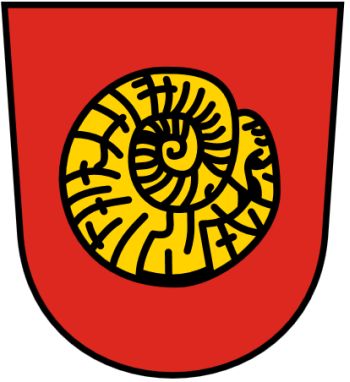Seppenrade: Difference between revisions
Jump to navigation
Jump to search
Knorrepoes (talk | contribs) m (Text replacement - "{{media}} Literature : " to "Literature : {{media}} ") |
Knorrepoes (talk | contribs) m (Text replacement - "Literature :" to "'''Literature''':") |
||
| Line 22: | Line 22: | ||
The parms show an ammonite, as in Seppenrade in 1895 the largest ammonite in the world was discovered. The fossil has a diameter of 1,80 m. | The parms show an ammonite, as in Seppenrade in 1895 the largest ammonite in the world was discovered. The fossil has a diameter of 1,80 m. | ||
[[Civic Heraldry Literature - Germany|Literature]] : | [[Civic Heraldry Literature - Germany|'''Literature''']]: | ||
{{media}} | {{media}} | ||
Revision as of 15:43, 9 September 2022
This page is part of the German heraldry portal Deutsche Wappensammlung |
Heraldry of the World |
|
German heraldry:
|
Selected collector's items from Germany:
|
SEPPENRADE
State : Nordrhein-Westfalen
District (Kreis) : Coesfeld (until 1974 Lüdinghausen)
Incorporated into : 1975 Lüdinghausen
| German | In Rot ein goldener Ammonit. |
| English | No blazon/translation known. Please click here to send your (heraldic !) blazon or translation |
Origin/meaning
The parms show an ammonite, as in Seppenrade in 1895 the largest ammonite in the world was discovered. The fossil has a diameter of 1,80 m.
Contact and Support
Partners:
Your logo here ?
Contact us
© since 1995, Heraldry of the World, Ralf Hartemink 
Index of the site












